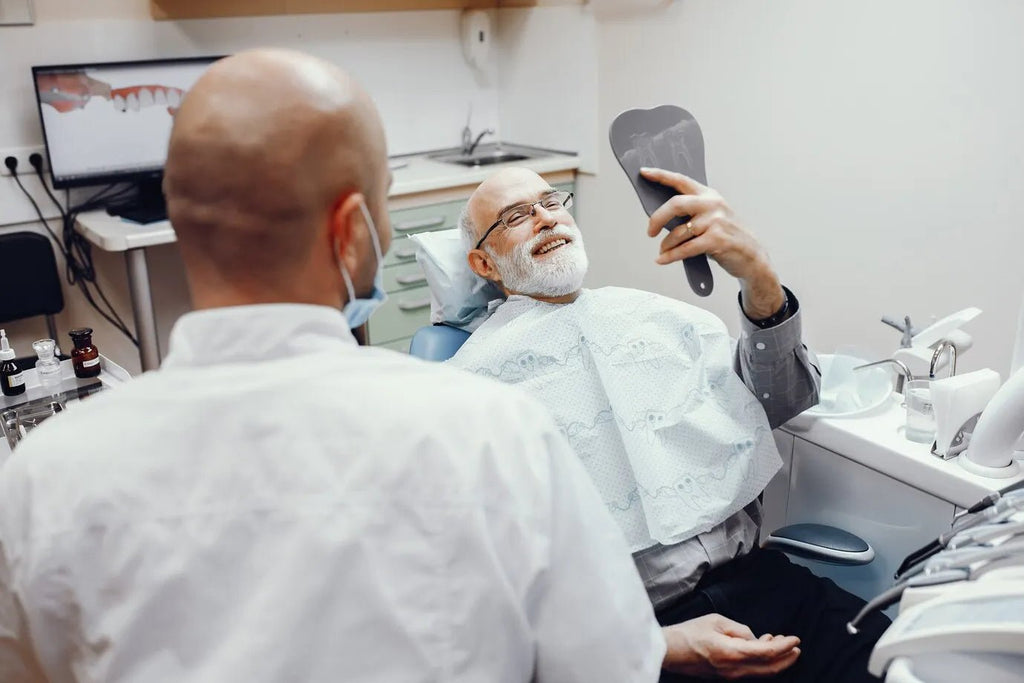
Myths and Facts About Dental Explorers

Myths and Facts About Dental Explorers: What Patients Should Know
Have you ever heard someone say that dental explorers cause pain or that they damage your teeth? Many people feel nervous when they see a dentist holding this small, pointed tool. But are these fears true?
In this blog, we will clear up common myths and explain the facts about dental explorers. By the end, you will understand why dentists still use them and how they help keep your teeth healthy. Let’s break it down in simple terms!
What is a Dental Explorer?
A dental explorer is a small metal tool that looks like a tiny hook. Dentists use it to:

· Check for cavities by gently touching your teeth to see if any spots are soft or weak.
· Find plaque and tartar buildup in places that are hard to reach with a toothbrush.
· Detect cracks or rough areas on your teeth that could lead to bigger problems later.
Different Types of Dental Explorers
There are different types of explorers, each designed to check certain areas of your mouth:
· Shepherd’s Hook Explorer: The most common type. It has a curved tip and is mainly used to check for cavities.
· Straight Explorer: Has a straight tip and helps examine the smooth surfaces of your teeth.
· Pigtail Explorer: Has a shape like a curly pig’s tail. It helps check between teeth for hidden plaque or decay.
Even though modern technology has introduced digital tools to detect cavities, dental explorers are still one of the best tools for checking your teeth. Now, let’s clear up some common misunderstandings about them! For more information about explorers visit our blog, What are dental explorers, a complete guide.
Common Myths and Facts About Dental Explorers
Myth 1: Dental Explorers Always Cause Pain
Fact: A dental explorer might feel a little uncomfortable, but it does not cause pain. Dentists use it gently to check for weak spots on your teeth. If you feel any sharp sensation, it may be a sign of tooth sensitivity or an early cavity, not because the tool is hurting you.
Myth 2: Dental Explorers Can Damage Teeth
Fact: Some people believe that when a dentist pokes a tooth, it creates a hole or damages the enamel. This is not true! Cavities form due to bacteria, sugar, and acid, not because of a dental tool. The explorer only detects problems that already exist.
Myth 3: Dental Explorers Are Old-Fashioned and No Longer Needed
Fact: While modern technology like digital scanners and lasers can help detect cavities, dental explorers still play an important role. Many dentists combine both methods to get a full picture of your oral health.
Myth 4: All Dental Explorers Are the Same
Fact: There are different types of dental explorers, each designed for different areas of your mouth. A dentist chooses the best one for the job.
Myth 5: You Don’t Need a Dental Explorer if You Get X-Rays
Fact: X-rays are great for seeing inside your teeth, but they don’t physically feel the surface of your teeth. That’s why dentists still use explorers to check for hidden problems that might not appear on an X-ray.
Why Do Dentists Still Use Dental Explorers?
Even though new tools exist, dental explorers are still one of the most useful tools in dentistry because:
· They let dentists physically check for cavities: The explorer helps feel for soft spots that might not show up on a scan.
· They are simple and effective: Some high-tech machines are expensive, but explorers are reliable and cost-effective.
· They help catch small cavities early: If detected early, a small cavity can be treated before it becomes a big problem.
The best approach is a combination of both traditional tools and modern technology to get the most accurate dental check-up.
FAQs
Q1: Can a dental explorer poke holes in my teeth?
A: No, the explorer only checks for weak spots in your teeth. If the tooth is already soft due to decay, the explorer might sink in slightly, but it does not create a cavity.
Q2: Why does it feel sharp when my dentist uses an explorer?
A: If you feel discomfort, it could be a sign that your tooth is sensitive or already has a cavity forming. The explorer helps the dentist detect these early.
Q3: Are digital scanners better than dental explorers?
A: Both have their benefits! Digital scanners can take pictures of your teeth, while an explorer gives physical feedback. Dentists often use both tools for the best results.
Q4: Can I ask my dentist not to use a dental explorer?
A: Yes, you can discuss your concerns with your dentist. However, dental explorers are a safe and effective tool for detecting cavities.
Q5: How often should I get my teeth checked with a dental explorer?
A: It’s recommended to visit your dentist every six months for a regular check-up. If you have a history of cavities, you may need to visit more often.
Conclusion: Clearing Up the Myths
· Dental explorers do not cause pain or harm your teeth.
· They are still useful, even with modern technology.
· A combination of tools gives the best dental care.
Next time you visit the dentist, you can relax knowing the truth about dental explorers!
Related Blogs:
· Types of dental explorers and their uses a complete guide.
· What instruments must a dentist have for a basic dental exam?
· Latest innovations in dental diagnostic instruments in 2025.
· Dental Explorers VS Modern Technology.
· Why stainless steel is best for dental instruments?













